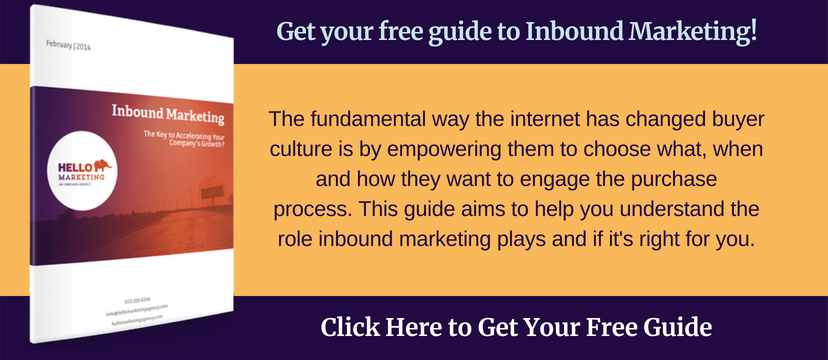For many sales teams, it’s getting harder and harder to get good quality B2B leads using the old tactics: cold calling, networking, and traditional advertising. Why? Because buying behavior has changed.
Today, buyers do most of their research online. Only when they are close to a purchase are they ready to talk to a sales rep.
If you think your customers are not online, think again… remember, B2B buyers are people too!
Given these facts, you’re probably wondering how to get B2B leads that will impact your bottom line. Which B2B lead generation strategies actually work?
Digital marketing works because you engage with interested buyers online at all stages of their buying process, establishing your company as a trusted resource. The following infographic explains how digital marketing brings in B2B leads.
If you’d rather read in text format, see more details below the infographic.
How to Attract B2B leads with Digital Marketing
STEP 1. Set strategic marketing goals
Why: You can’t measure marketing success & ROI without defining goals up front.
How: Be specific, be realistic, and prioritize what you need most. For example, quantify your goals for attracting qualified B2B leads.
Ideas: Define growth targets for website visibility, social following, lead conversion, and/or revenue.
Proof: Marketers who set goals are 429% more likely to report success than those who don’t. And 81% of those successful, goal-setting marketers achieve them. (source)
STEP 2. Know your buyers
Why: You can’t engage buyers with content and attract B2B leads without understanding their wants and needs.
How: Do Buyer Persona research and map the buyer’s journey.
Ideas: Perform a careful analysis of deep-dive interviews with real customers and lost sales prospects.
Proof: 71% of companies who exceed revenue and lead goals have documented Personas. (source)
STEP 3. Optimize your website for SEO
Why: Buyers research online long before they contact a salesperson. SEO helps them find your website using Google search.
How: Do keyword research and implement SEO best practices to improve your site’s rankings in Google search results.
Ideas: Develop a keyword database based on your target buyer, and apply the right keywords to your website structure and content.
Proof: 71% of B2B researchers start their research with a generic search. (source)
STEP 4. Create valuable content
Why: Your buyers are searching for answers and information.
How: Produce helpful content that addresses your prospects’ questions and concerns, shares your expertise, and positions you as a thought leader.
Ideas: Publish regular content using formats your buyers prefer, such as blog posts, ebooks, infographics, videos, podcasts, quizzes, assessments, white papers, and webinars.
Proof: 96% of B2B buyers want content with more input from industry thought leaders. (source)
STEP 5. Share content on social media
Why: Your buyers spend significant time on social media.
How: Connect & engage them by sharing the right content on the right channels.
Ideas: Find out which social media and digital channels your buyers use most. Then share informative and helpful content that builds relationships and attracts prospects to your website.
Proof: 92% of marketers say that social media is important to their business. (source)
STEP 6. Engage and convert website visitors
Why: This is how your digital marketing effort delivers B2B leads!
How: Add carefully crafted calls-to-action (CTAs) and landing pages to your website.
Ideas: Strategic CTAs and landing pages offer valuable content to prospects just in time to meet a pressing need. To get the content, visitors share their contact information via a form, thereby becoming a lead.
Proof: For B2B marketers, the ideal number of fields on web registration and download forms is between three and five for 79% of respondents. (source)
STEP 7. Help prospects move toward a purchase with lead nurturing
Why: When a sale takes time, you need to stay top-of-mind.
How: Nurture your B2B leads with targeted email marketing.
Ideas: Use online behavior and signals to segment contacts by persona and purchase stage. Then send email content regularly that addresses their concerns and overcomes barriers.
Proof: Segmented and targeted emails generate 58% of all revenue. (source)
STEP 8. Continuously measure results & improve strategy
Why: Digital marketing is never a one-and-done exercise.
How: Track marketing KPIs using a marketing automationplatform.
Ideas: At least monthly, analyze your progress toward the digital marketing goals you set in Step 1. Then tweak your strategy and tactics where needed to keep improving results.
Proof: The less companies know about their KPIs, the less likely they are to meet their revenue goals. (source)
Have more questions about how digital marketing can work for you 24/7 to bring in qualified B2B leads? Get our helpful guide to digital and inbound marketing.


